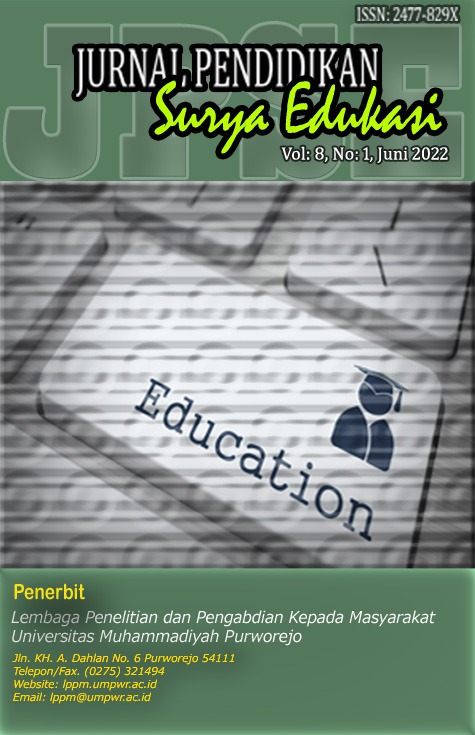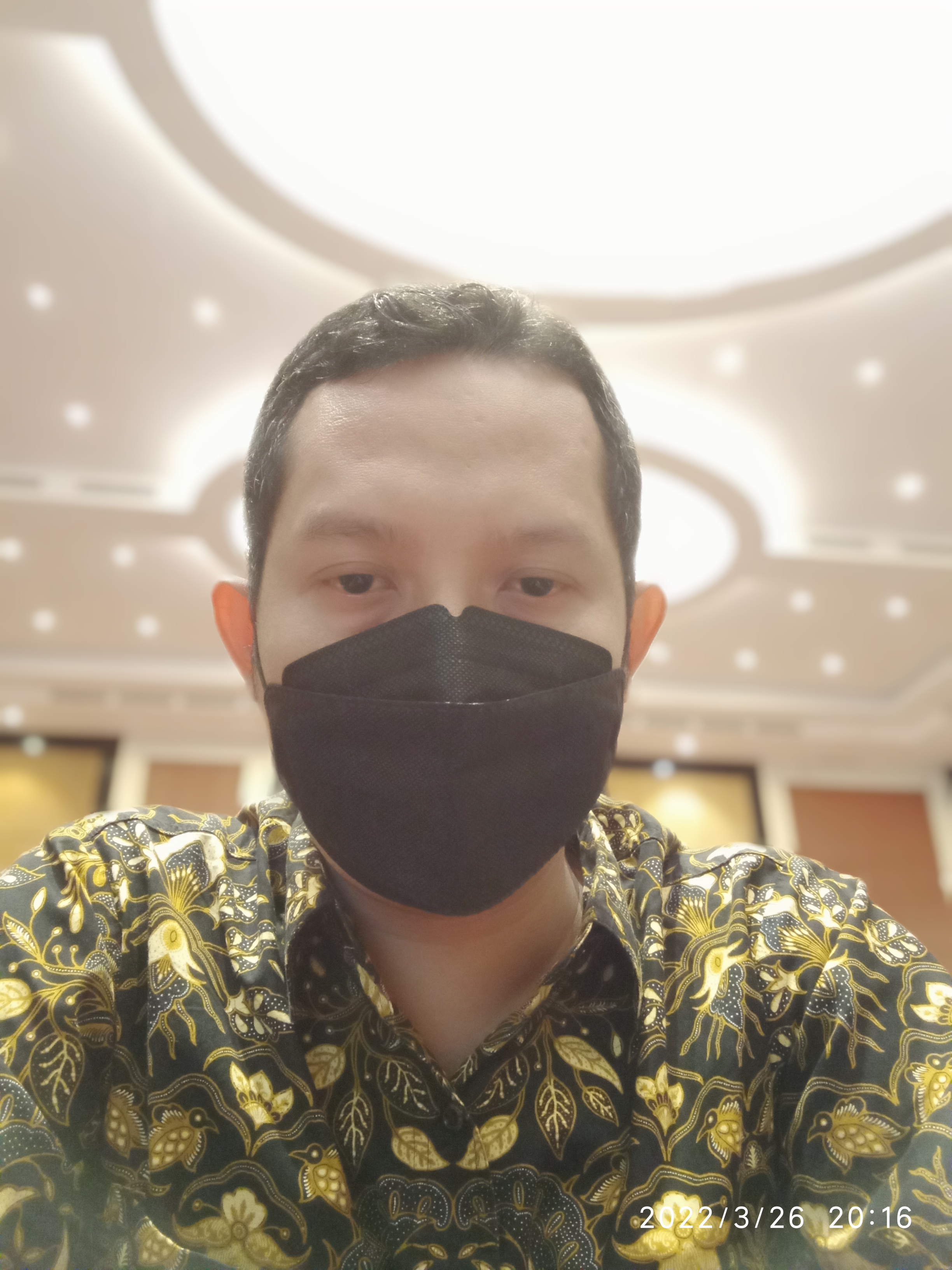How synchronous learning changes the workload of teachers: Experiences learned from expanding countries
Abstract
The Impact of synchronous Learning on Educators' Workload The coronavirus outbreak, particularly in the Republic of Indonesia and the Russian Federation, has fundamentally altered the teaching and learning process. The in-person teaching and learning process transitions to an online format. Educators and learners must be prepared for execution. Educators must adapt their instructional methods for online platforms to ensure the continuity of teaching and learning. This presents significant obstacles and obligations, particularly for educators who are initiating the online teaching process. This study aimed to ascertain if Synchronous Learning exacerbates the physical, mental, and financial burdens on teachers. The employed methodology was quantitative, utilizing an online-distributed questionnaire as the tool. The research samples comprised 20 educators employed at private senior vocational institutions in Indonesia and Russia. The teacher burdens variable indicates that the average responder perceives the burden as high, as seen by an average value of 0.730, which falls within the range of 0.501 to 1. This concludes that Synchronous Learning significantly increases instructors' workloads. It proves that synchronous learning imposes additional physical, emotional, and financial burdens on teachers.
References
Adedoyin, O. B., & Soykan, E. (2020). Covid-19 pandemic and online learning: The challenges and opportunities. The Challenges and Opportunities. Interactive Learning Environments. https://doi.org/10.1080/10494820.2020.1813180
Al Maroof, R. A. S., & Al Emran, M. (2018). Students acceptance of Padlet: An exploratory study using PLS-SEM approach. International Journal of Emerging Technologies in Learning, 13(6), 112.
Arikunto, S. (2006). Research Procedure, A Practical Approach. PT Rineka Cipta, Jakarta.
Cho, Y. H., Caleon, I., & Kapur, M. (2015). Authentic Problem Solving and Learning for Twenty-First Century Learners (pp. 3–16). https://doi.org/10.1007/978-981-287-521-1_1
Cipriano C, R.-S., & Brackett, M. A. (2020). Supporting school community Wellness with Social and Emotional Learning (SEL) during and after a pandemic. Edna Bennet Pierce Prevention Research Center.
Creswell, J. W. (2014). Research Design: Qualitative, Quantitative and Mixed Methods Approaches (4th ed.). Thousand Oaks, CA: Oaks.
Djarwanto, D. (1994). Pokok-pokok Metode Riset dan Bimbingan Teknis. Liberty.
Ermayani, T., Nurhadi, R., & Masykuri, E. (2021). The Problems of Digital Da’wah during the Covid-19 Pandemic. https://doi.org/10.4108/eai.18-11-2020.2311673
Harangi-Rakos, M., Stefanescu, D., Zsido, K. E., & Fenyver, V. (2022). Thrown into deep water: Feedback on student satisfaction—A case study in Hungarian and Romanian universities. Education Sciences, 12(1), 36. https://doi.org/doi:10.3390/educsci12010036
Hayati, A., Hadi, M. S., & Izzah, L. (2022). Online Based Innovative Education (VOA Learning English) to Build English Students’ Listening Skills. Scripta : English Department Journal, 9(1), 44–54. https://doi.org/10.37729/scripta.v9i1.2159
Hazliza, H., Munira, S. M. N., & Zarina, M. (2016). Teachers’ challenges in the implementation of frog virtual learning environment. Asia Pacific Journal of Educators and Education, 31, 115–129. http://dx.doi.org/10.21315/apjee2016.31.7
Indra Kusuma, Ngafif, A., & Masykuri, E. S. (2021). E-Learning Usage Analysis in English Language in Universitas Muhammadiyah Purworejo. Scripta : English Department Journal, 8(2), 35–44. https://doi.org/10.37729/scripta.v8i2.1136
Johnson, N., Veletsianos, G., & Seaman, J. (2020). U.S. faculty and administrators’ experiences and approaches in the early weeks of the COVID-19 pandemic. Online Learning, 24(2), 6–21. https://doi.org/doi:10.24059/olj.v24i2.2285
José Miguel Orellana Parapi; Lilis Imas Maesaroh; Basuki Basuki; Edi Sunjayanto Masykuri. (2020). Virtual Education: A Brief Overview of Its Role in the Current Educational System. Scripta : English Department Journal, Vol. 7 No. 1 (2020), 8–11.
Maskuri, E., Al Hakim, Y., & Supriyono, S. (2019). Integrated Technology And Mutual Participation For Changing Communities Socially, Economically And Religiously. https://doi.org/10.4108/eai.19-10-2018.2281307.
Masykuri, E. S. (2022). Technology effect of efl listening comprehension to teacher during pandemic. Journal of English Teaching and Learning Issues, 5(1), 51–62.
McKenzie, L. (2021). Students want online learning options post-pandemic. Inside Higher Ed. Inside Higher Ed. https://www.insidehighered.com/news/2021/04/27/survey-reveals-positive-outlook-online-instruction-post-
Mohamad, M., Palani, K., Nathan, L., Sandhakumarin, Y., Indira, R., & Jamila, E. (2023). Educational Challenges in the 21st Century: A Literature Review. International Journal of Academic Research in Progressive Education and Development, 12. https://doi.org/10.6007/IJARPED/v12-i2/16865.
Mosleh, S., Kasasbeha, M., Aljawarneh, Y., Alrimawi, I., & Saifan, A. (2022). The impact of online teaching on stress and burnout of academics during the transition to remote teaching from home. BMC Medical Education, 22. https://doi.org/10.1186/s12909-022-03496-3
Noreiny, M., & Normaliza, A. (2017). Instagram in ESL classroom. Man in India, 97(20), 107–114.
Nurhidayah, N. A., Tusino, T., & Masykuri, E. S. (2022). Students’ Perception toward EFL College Teacher Pedagogical Competence in Teaching Writing. Scripta : English Department Journal, 9(2), 209–216. https://doi.org/10.37729/scripta.v9i2.1475
Parker, J. (2021). Technology as integral to a new paradigm of adult education. International Journal of Adult Education and Technology, 12(4), 37–46. https://doi.org/doi:10.4018/IJAET.2021100103
Permendikbud-no-15-tahun-2018. (2018). [Dataset]. https://peraturan.bpk.go.id/Home/Details/138191/permendikbud-no-15-tahun-2018
Prihatini, N., Sudar, S., Tusino, T., & Masykuri, E. S. (2023). The Impact of Using Blended Learning to Improve Reading Comprehension. Scripta : English Department Journal, 10(1), 128–139. https://doi.org/10.37729/scripta.v10i1.2361
Purwoko, R. Y. (2017). Analisis Kemampuan Content Knowledge Mahasiswa Calon Guru Matematika Pada Praktek Pembelajaran Mikro. Jurnal Pendidikan Surya Edukasi (JPSE), 3(1), 55–65.
Purwoko, R. Y. (2017). Urgensi pedagogical content knowledge dalam meningkatkan kualitas pembelajaran matematika. Jurnal Pendidikan Surya Edukasi, 3(2), 42–55. https://doi.org/10.37729/jpse.v3i2.4338
Purwoko, R. Y., Nugraheni, P., & Instanti, D. (2019). Implementation of pedagogical content knowledge model in mathematics learning for high school. Journal of Physics: Conference Series, 1254(1), 1–6. https://doi.org/10.1088/1742-6596/1254/1/012079
Schaffhauser D. (2020). The Pandemic’s Impact on Teacher, Parent and Student Attitudes. The Journal Transformic Education through Technology.
Seman, S. C., Yusoff, S. M. W., & Embong, R. (2017). Teachers challenges in teaching and learning for higher order thinking skills (HOTS) in primary school. International Journal of Asian Social Science, 7(7), 534–545.
Shintiani, S., Sukarni, S., & Masykuri, E. S. (2022a). Teacher’s Strategies of English Online Learning during COVID-19 Pandemic in SMA N 8 Purworejo. Scripta : English Department Journal, 9(2), 172–181. https://doi.org/10.37729/scripta.v9i2.1470
Shintiani, S., Sukarni, S., & Masykuri, E. S. (2022b). Teacher’s Strategies of English Online Learning during COVID-19 Pandemic in SMA N 8 Purworejo. Scripta : English Department Journal, 9(2), 172–181. https://doi.org/10.37729/scripta.v9i2.1470
Singarimbun, M., & S, E. (1989). Metode Penelitian Survay. LP3S. LP3S.
Song, L., Singleton, E. S., Hill, J. R., & Koh, M. H. (2004). Improving online learning: Student perceptions of useful and challenging charateristics. The Internet and Higher Education, 7(1), 59–70. https://doi.org/doi:10.1016/j.iheduc.2003.11.003
Sugiyono. (2008). Metode Penelitian Pendidikan: Pendekatan Kuantitatif, Kualitatif, dan R & D. Alfabeta.
Sunjayanto Masykuri, E., & Basuki, B. (2022). Students’ perception of digital media for English teaching learning. Teaching English as a Foreign Language Journal, 1(1), 64–73. https://doi.org/10.12928/tefl.v1i1.171
Sunjayanto Masykuri, E., Sukarni, S., Tusino, T., & Dewi, P. (2022). The cohesive devices in hiver.com and its implication in teaching online writing. Jurnal Ilmu Bahasa, Sastra Dan Pengajarannya, 1(2), 124–135.
Sunjayanto Masykuri, E., Vlаdimirоvnа, V. O., & Evgenevichc, M. I. (2024). First-year-students’ perceptions of asynchronous media platform (AMP) for learning English. English Language Teaching Educational Journal, 6(3), 188–198. https://doi.org/10.12928/eltej.v6i3.6661
Ulum, H. (2022). The effects of online education on academic success: A meta-analysis study. Education and Information Technologies, 27(1), 429–450. https://doi.org/doi:10.1007/s10639-021-10740-8 PMID:34512101
Van Wart, M. (2022). Online Learning: What We Know and What We Don’t Know. International Journal of Adult Education and Technology, 13, 1–18. https://doi.org/10.4018/IJAET.312581









